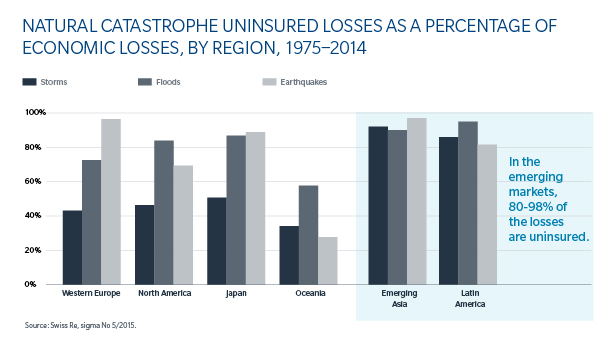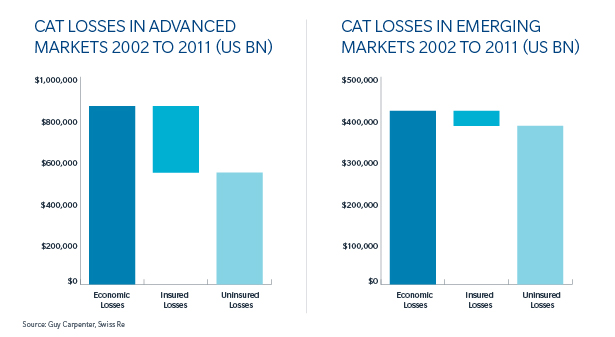

Aidan Pope, Managing Director
Many recent catastrophe events in the Latin America/Caribbean region provide examples of the protection gap: Only 5 percent of the USD 8 billion economic loss from Haiti’s 2010 earthquake was insured; and the insured portion of the USD 2 to 3 billion economic loss caused by the April 2016 earthquake in Manta, Ecuador, is expected to reach no more than 15 percent. The 2016 earthquake has deeply impacted the local economy and government finances as unemployment increased by approximately 50 percent and the government was compelled to increase sales taxes by two percent to fund national reparation and recovery costs. In general, emerging markets face a much larger protection gap than developed economies:


Given the overall impact of catastrophes on public-sector finances, governments in Latin America are transitioning from an over-reliance on post-event disaster financing to a pre-event approach to disaster risk mitigation. Societies are realizing that transferring risk to the private sector provides efficient and cost-effective solutions that relieve already strained public-sector budgets.
The insurance industry also empowers the mechanisms and innovation needed to “build back better.” This concept relies on three key ideas - risk reduction, community recovery and implementation - to increase community resiliency. By improving building codes and land-use planning, cities can reduce the future vulnerability of their physical infrastructure. At the same time, social and economic recovery is supported through market-based incentives and subsidies to finance aid and reconstruction efforts. Finally, stakeholder education, legislation, regulation, community consultation and monitoring and evaluation must all be used to ensure compliance with appropriate and culturally sensitive standards and targets.
“Building back better” institutionalizes disaster assessment and recovery frameworks at the national, municipal and community levels as well as in the private sector, academia and civil organizations, improving coordination and risk governance. Sharing regional and global best practices and establishing international aid standards further supports sustainable recovery and reconstruction.
This piece first appeared on BRINK.